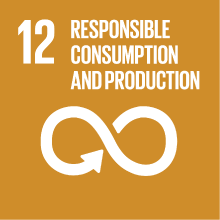INORGANIC CHEMISTRY AND LABORATORY - MOD.2
- Academic year
- 2021/2022 Syllabus of previous years
- Official course title
- CHIMICA INORGANICA E LABORATORIO - MOD.2
- Course code
- CT0351 (AF:333008 AR:176302)
- Teaching language
- Italian
- Modality
- On campus classes
- ECTS credits
- 6 out of 12 of INORGANIC CHEMISTRY AND LABORATORY
- Degree level
- Bachelor's Degree Programme
- Academic Discipline
- CHIM/03
- Period
- 2nd Semester
- Course year
- 2
- Moodle
- Go to Moodle page
Contribution of the course to the overall degree programme goals
The specific training objective of the course is to provide knowledge of inorganic chemistry related to the Lewis acid and bases, and to the basic concepts useful for the comprehension of the structure of the coordination compounds. Therefore, the course aims on the one hand to complete and integrate some of the basic concepts examined in the General Chemistry course, on the other to offer to the students an overview of the coordination compounds and of the d-block elements from a sustainability perspective. The course also examines the chemistry of the Group 12 elements.
Lastly, the course aim at developing competences that can allow the students to carry out the synthesis and characterization of an inorganic compound with specific physicochemical characteristics.
Expected learning outcomes
(I) Knowledge of the coordination bond in terms of Lewis acid-base interactions.
(II) Knowledge of the nomenclature of the coordination compounds.
(III) Knowledge of composition and geometry, isomerism and chirality of the coordination compounds.
(IV) Knowledge of the general trends within the d-block elements.
(V) Knowledge of the chemistry of the Group 12 elements.
(VI) Main methodologies to perform inorganic synthesis experimental activities.
2. Ability to apply knowledge and understanding
(I) Ability to identify the stability of a coordination compound in terms of the HSAB theory.
(II) Ability to interpret the periodic properties of the d-block elements.
(III) Ability to evaluate analogies and differences among the Group 12 elements.
(IV) Ability to carry out the synthesis of compounds characterized by covalent, ionic and coordination bonds.
(V) Ability to draw up an experimental notebook and a consequent elaboration of the results, to be made explicit in a scientific report.
3. Ability to judge
(I) Ability to predict the relative stability within the same class of compounds.
(II) Ability to recognize the sustainability aspects of the chemistry of the Group 12 elements and of selected d-block elements.
(III) Ability to critically evaluate the results obtained during the experimental activities.
4. Communication skills
(I) Ability to communicate the concepts learned and the result of their application using appropriate terminology, both in oral and written forms.
(II) Ability to interact with the teacher and with the classmates in a respectful and constructive way, especially during the experimental work carried out in group.
5. Learning skills
(I) Ability to take notes, select and collect information according to specific importance and priority.
(II) Ability to be sufficiently independent in the collection of experimental data.
Pre-requirements
Contents
(I) Acid and bases: green solvents, revision and in-depth analysis of Brønsted and Lewis acidity, hard and soft acids and bases (Pearson’s paradigm).
(III) Introduction to the coordination compounds: composition and geometry, isomerism and chirality, main classes of ligands, nomenclature.
(IV) Chemistry of d-block elements: sustainability aspects and general trends. Brief introduction to the electronic structure and properties: focus on the octahedral complexes.
(V) Chemistry of the Group 12 elements with a specific focus on sustainability and technological aspects.
(VI) Laboratory experiences: synthesis of: tetrafluoroborate ion, polysiloxanes, phosphine oxides and phosphine sulfides, polyiodide ions, compounds with boron-nitrogen bonds, octahedral coordination compounds with oxygen and nitrogen donor ligands, in relation to the theoretical contents of the course. Conductimetry and spectroscopic (IR, NMR) characterization of the synthesized compounds. Evaluation of the thermal stability of carbonates.
Referral texts
• Rayner-Canham G., Overton T., Chimica Inorganica Descrittiva, Edises, 2017.
• Miessler G.L., Tarr D.A., Chimica Inorganica, Piccin, ISBN 978-88-299-2096-9.
• Shriver D.F., Atkins P.W., Inorganic Chemistry (4th or 5th edition), Oxford.
• Cotton F.A., Wilkinson G., Gaus P.L., Basic Inorganic Chemistry, Wiley, ISBN 978-0-471-50532-7.
Assessment methods
The laboratory test consists in the preparation of a scientific report concerning the experimental activity carried out in the laboratory, which contains a description of the experimental approach adopted, the analytical methods used and the assignment of the structure of the prepared products. In this way, the student's ability to deal with experimental and practical problems, to correctly process a set of experimental data, and to report the work by writing in a formal manner is assessed. The report must be delivered latest one week before the oral exam.
Type of exam
Teaching methods
• frontal lectures that include examples;
• laboratory experiences in which the students perform inorganic synthesis and characterization experiments closely linked to the contents delivered during classes (the participation to at least 80% of the laboratory activities is mandatory);
All the slides of the lectures can be found and downloaded from the Moodle webpage of the course.
Further information
Accommodation and support services for students with disabilities and students with specific learning impairments:
Ca’ Foscari abides by Italian Law (Law 17/1999; Law 170/2010) regarding support
services and accommodation available to students with disabilities. This includes students with mobility, visual, hearing and other disabilities (Law 17/1999), and specific learning impairments (Law 170/2010). In the case of disability or impairment that requires accommodations (i.e., alternate testing, readers, note takers or interpreters) please contact the Disability and Accessibility Offices in Student Services: disabilita@unive.it.
THE STRUCTURE AND CONTENT OF THE COURSE MAY CHANGE DUE TO THE COVID-19 EPIDEMIC.
2030 Agenda for Sustainable Development Goals
This subject deals with topics related to the macro-area "Circular economy, innovation, work" and contributes to the achievement of one or more goals of U. N. Agenda for Sustainable Development


